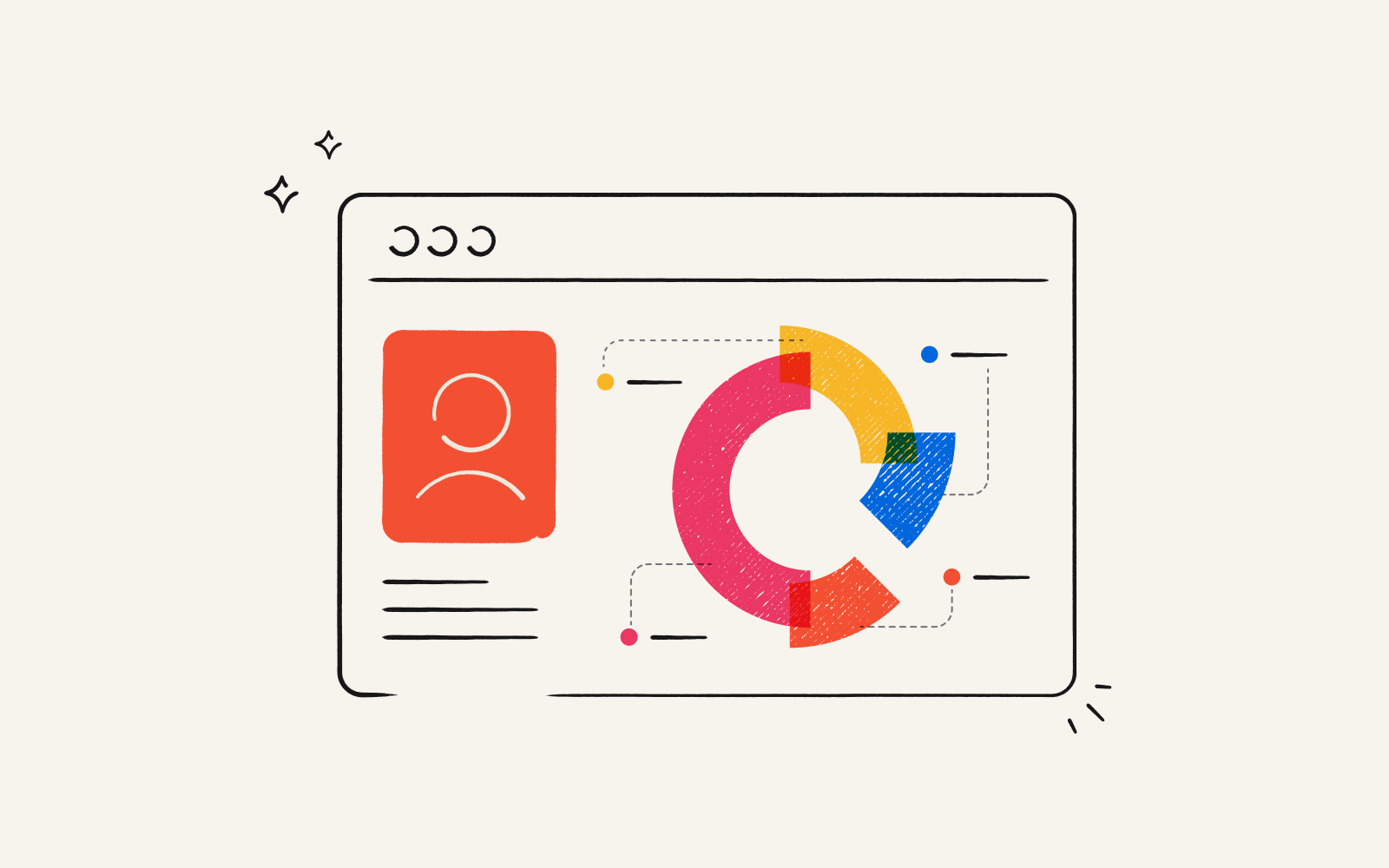The pros and cons of online focus groups
By Laura Ojeda Melchor|5 min read|Updated May 29, 2024

From healthcare and marketing to social sciences and tech, the tiny but mighty focus group delivers rich insights you can’t get any other way.
Watching a group of people discuss a product, service, or topic together yields unmatched qualitative data. You get to see the emotions play out across their faces. The way they agree or argue with one another. The things they love and hate about the topic you’re dicussing.
But with the rise in tech and AI advancements, are focus groups going out of style?
According to the latest research, focus groups are still among the 7 most popular methods for gathering qualitative data.
As the market research firm Bellomy puts it, “Consider ‘antiquated’ tools that have stood the test of time: the hammer, the cup, the shovel, and the focus group.”
One thing our tech-savvy landscape has changed about focus groups? The format. A few decades ago, holding an online focus group was impossible. Now, it’s something companies do everyday.
But should they?
In this article, we’ll weigh the pros and cons of online focus groups to help you decide whether to use them or not.
What is an online focus group?
An online focus group is a research method where a small group of people comes together to discuss a product, service, or topic. But instead of taking place in person, as in a traditional focus group, an online focus group takes the conversation to a virtual platform.
Our guide to focus groups can help you set one up for the first time—whether it’s in-person or online.
There are even software services designed specifically with online focus groups in mind, like Discuss and Remesh. Even trusty old Zoom can do the trick.
The goal is still the same: to gather diverse perspectives and in-depth feedback through guided group discussions.
That said, running a focus group from behind a screen is different from gathering for an in-person session. Different doesn’t mean bad—far from it. There are several benefits to hosting a focus group online.
The benefits of online focus groups
When you run a focus group virtually, you’re running the closest possible equivalent to an in-person focus group.
At the same time, you get to skip the drawbacks of an in-person group. Things like renting a venue, hiring a caterer, and missing out on feedback from people who aren’t able to travel to the location.
You get to tap into these core strengths of online focus groups:
Budget-friendliness: Online focus groups eliminate the need for physical venue rentals and travel expenses. This means you can focus your marketing budget on other things, like investing in high-quality focus group software and offering meaningful participant rewards.
Increased efficiency: Everything from setup to scheduling is faster and more flexible with online focus groups. The moderators, stakeholders, researchers, and participants get to meet in the comfort of their own homes or offices. No one has to carve out extra time from their busy schedules for the commute.
Broader geographic reach: When you run an in-person focus group at a venue in downtown San Francisco or NYC, you’re tied to that location. So are your participants. When you run an online focus group, participants can join from anywhere in the world. This means you get access to a wider and more diverse set of respondents.
Deeper insights: Have you ever heard of the online disinhibition effect? It’s the term social scientists use to describe the phenomenon of people acting more boldly online than they would in person. With fewer social constraints to follow in an online setting, people tend to shake off their inhibitions. They might feel braver and less intimidated than if they were actually sitting next to strangers. This, in turn, can lead to more candid feedback—and deeper insights.
Disadvantages of online focus groups
As with any method of research, there are drawbacks to hosting your focus group on a virtual platform.
These cons include:
Internet connectivity and technical difficulties: Participants might experience unstable internet connections or technical issues with software. These frustrating issues can interrupt the flow of discussion. They can even potentially exclude some individuals from participating fully in the conversation.
Greater distractions: Being in a familiar, uncontrolled environment such as the home can lead to more distractions. Kids, pets, family members, iPhones. There are lots of potential distractors and not a lot you can do to keep them in check. This might mean your participants are only partially listening to discussion questions. Or—especially if they have kids or pets—have to keep running into the background to put out small (figurative) fires.
Obfuscated body language: Researcher Albert Mehrabian famously posits that communication is 55% nonverbal and 38% vocal, with only 7% of importance assigned to the words themselves. This is a theory, not an exact science. But the takeaway is clear: body language and subtle, non-verbal cues matter a lot. And it’s difficult to read the body language of a person appearing on a two-dimensional surface.
Limited discussions between members: Online platforms can sometimes restrict natural, free-flowing interactions among participants. As anyone who participates in Zoom meetings knows, discussing things virtually, as a group, takes a bit of getting used to. For one, it’s exceedingly difficult to understand two people talking at once. In person, you can discern between overlapping voices. But over Zoom, this kind of excited discussion is typically incomprehensible. This can lead to less dynamic, spontaneous group discussions than you might have during an in-person focus group.
When to use online focus groups vs. in-person
Deciding which type of focus group to run can be tricky. You have to think about several factors, including:
Research objectives
Participant demographics
Budget constraints
Whether your research leans on nuanced communication cues
Here's a quick guide to help you decide whether to run an in-person or online focus group. No matter which type you run, make sure you curate a positive experience for your participants.
Online focus groups are best suited for:
Global reach: When your target demographic is spread across the world and gathering diverse insights is crucial, go for an online group.
Budget constraints: If budget is a limiting factor, online focus groups are more cost-effective as they eliminate travel, venue, and logistical costs.
Flexibility and convenience: Online groups are ideal for situations where participants' availability is all over the place. With online focus groups, they can join from the comfort of their homes at a convenient time.
Fast-paced research needs: When you need results from a focus group ASAP, online groups can be organized and deployed faster than in-person sessions.
In-person focus groups are preferable for:
Complex topics: Sometimes, a discussion topic requires a deep dive into sensitive issues. In these cases, face-to-face interactions allow for empathy and understanding among your participants.
Non-verbal cues: If the study relies heavily on reading body language or observing physical reactions, in-person focus groups are a must.
High engagement levels: When you need participants to work together and create a unique, collaborative group dynamic, an in-person group can deliver.
Technologically challenged demographics: In-person groups are best when participants aren't comfortable with using digital tools—or the right tools aren't easily available.
Key takeaways
Focus groups are a vital tool in any researcher’s toolkit. As you ponder the best way to approach your next focus group, keep these takeaways in mind:
Online focus groups have unique strengths: They are cost-effective, have a wider geographic reach, and can get you more candid responses from participants.
They come with specific challenges, too: Issues with online focus groups include technical problems, cats walking across keyboards (and other adorable distractions in the home), and difficulties in capturing non-verbal cues.
Choosing the right format depends on various factors: The decision between online and in-person focus groups should consider research goals, participant demographics, budget, and how heavily your research depends on nuanced communication cues.
If you need help finding people to take part in your focus group, our 10-step guide to recruiting research participants makes it easy.
No matter which type of focus group you choose, compensating your participants for their time can yield better results. Reward your respondents with Tremendous, a fast, free, and secure way to get your participants the rewards they want. Tremendous makes it easy for you to send monetary transfers, prepaid Visa cards, and gift cards to recipients in over 200 countries.
Sign up to send rewards today or take a demo with us to see Tremendous in action.
Published May 29, 2024
Updated May 29, 2024


